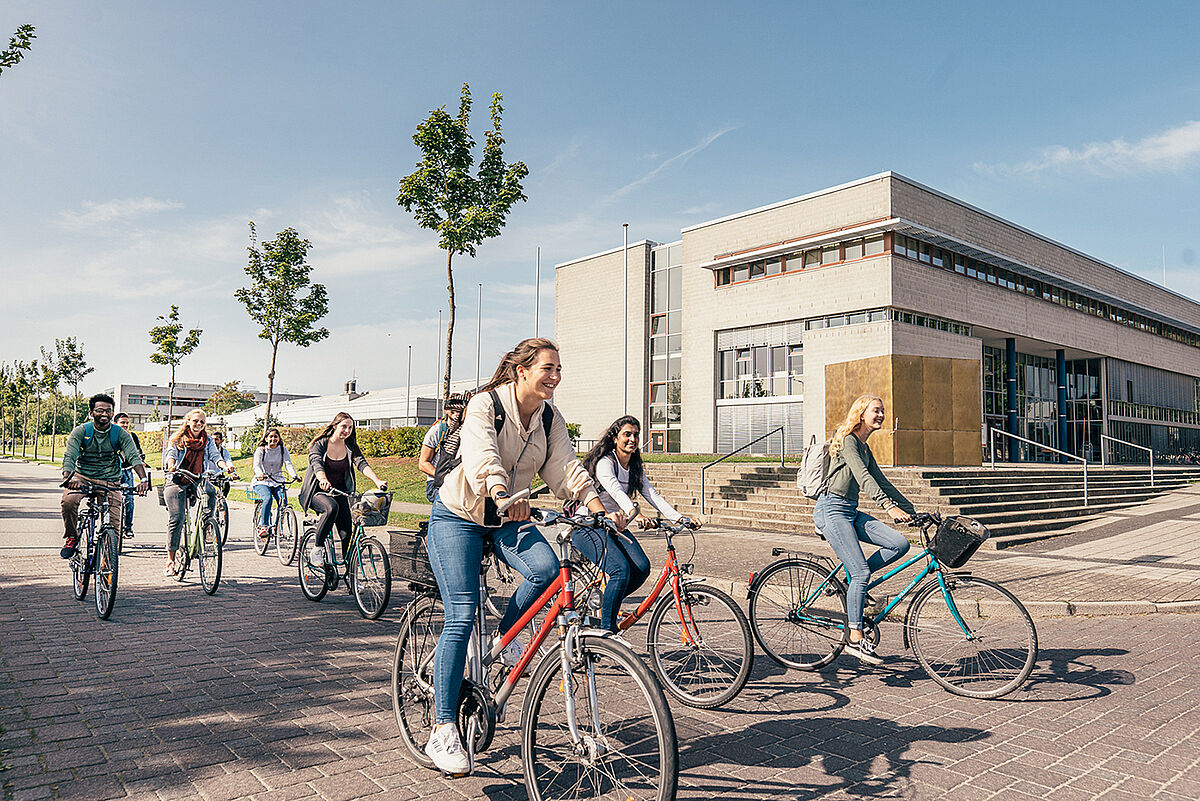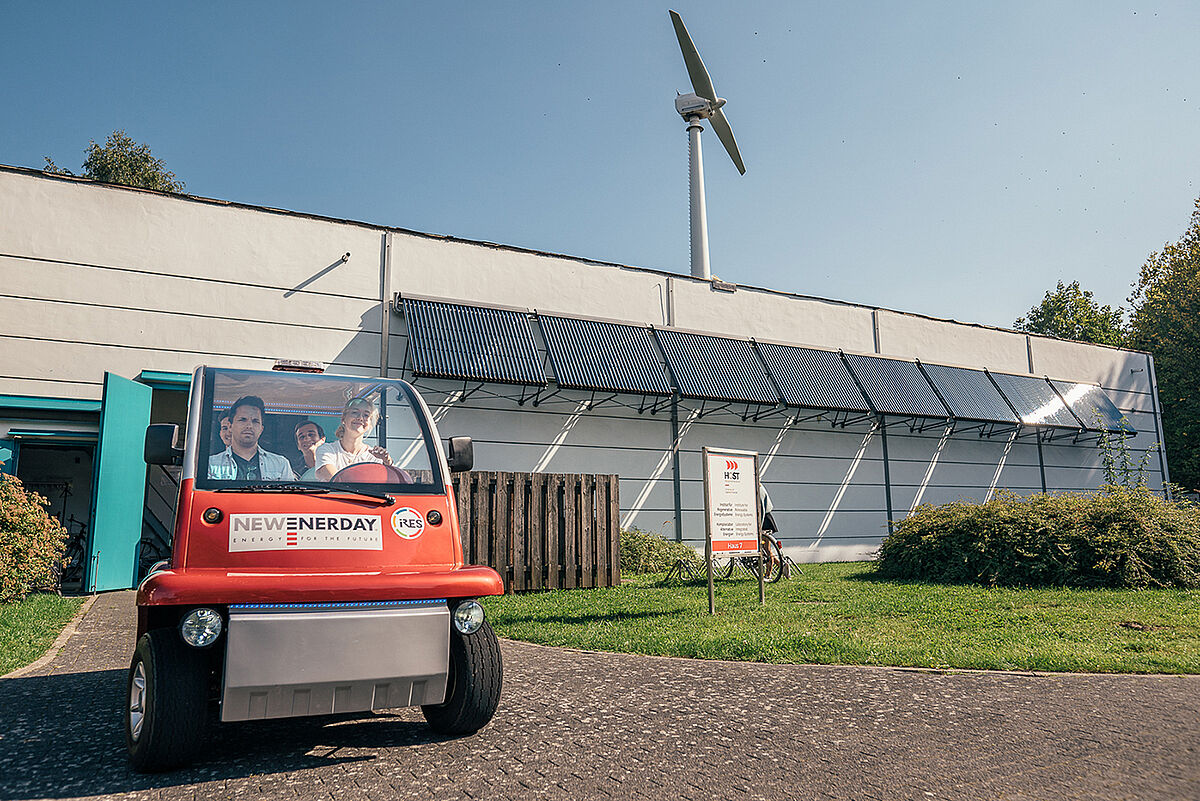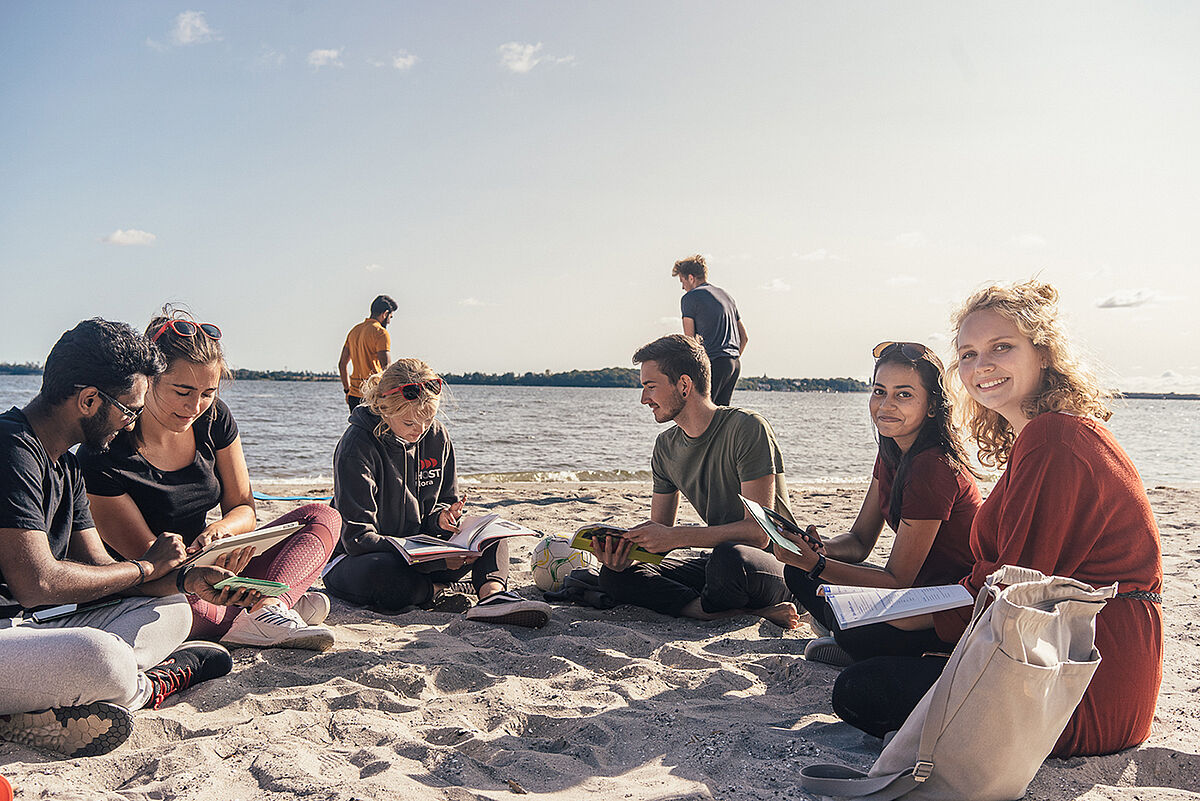Environment and sustainability
Stralsund University of Applied Sciences has been involved in climate protection for several decades. As early as 1995, we founded the Alternative Energies Complex Laboratory (KAE), which was merged into the Institute for Renewable Energies in 2009. Here, research is carried out into the use of renewable and alternative energies, their conversion, storage and use.
We also focus on environmental and sustainability aspects in the areas of tourism, production and business. They are not only addressed in teaching, but are also used as fields of investigation in research.
Here we bring together the latest news and interesting facts about the environment and sustainability at Stralsund University of Applied Sciences.
Interview with Prof. Dr. Gulden from Stralsund University of Applied Sciences
Climate change and how to deal with its consequences and effects have become the predominant topic of social discourse in recent years. There are numerous opinions, statistics, prejudices and myths surrounding the topic. The topic has also dominated the political debate in Germany, not least due to the adoption of the German government's climate package. However, students and professors at German universities are also studying the topic in depth, and not just since yesterday. We made an appointment with Prof. Dr. Gulden, Head of the Institute for Regenerative Energy Systems at Stralsund University of Applied Sciences, to conduct an interview on the subject of climate change and, in particular, the problem of energy storage.
HK: Prof. Dr. Gulden, you hold a professorship for renewable energies at Stralsund University of Applied Sciences and are also head of the Institute for Renewable Energy Systems. What exactly is this institute all about?
G: The institute was founded in 2009 by scientists at Stralsund University of Applied Sciences. Its primary purpose is to bundle the joint commitment to applied research and practical teaching in the field of renewable energy sources and hydrogen technology. Founded in 1995, the Alternative Energies Complex Laboratory provides the institute with a central research laboratory, including a wind turbine, an electrolyzer, fuel cells, a photovoltaic system and much more. This provides ideal conditions for our students on the Regenerative Energies (B.Sc.) and Renewable Energy and E-Mobility (M.Eng.) courses in particular.
HK: This means that Stralsund University of Applied Sciences has been working on alternative energy sources for some time. But why has your field of research only now gained the necessary social and political attention?
G: It's not as if science has only taken on climate change, and in particular anthropogenic climate change, in the last two decades. The greenhouse effect was discovered almost 200 years ago. The data pointing to man-made climate change has been known for decades. However, the political will to promote renewable energy sources in particular on a broad scale has only recently emerged. Added to this is the resistance of local citizens to power lines or wind farms. The effects of climate change are also clearly noticeable here in Germany, as the summer drought of 2018 impressively demonstrated.
HK: Since you just mentioned wind power: In many places, there are concerns that the electricity generated will overload our existing power grid. The wind sometimes blows very strongly and then dies down completely.
G: The concerns are not justified. The expansion of the German electricity grid is not taking place at the same time as the expansion of renewable energies and although the law gives priority to feeding in green electricity, in practice it is often the case that wind turbines are switched off to avoid overloading the grids. Electricity producers are currently still being compensated for this overcapacity. The problem here lies on the one hand in the coal-fired power plants, some of which are old and so inflexible that they cannot be regulated down at short notice. On the other hand, the sluggish expansion of the German electricity grid, although there are storage options to store this excess capacity and prevent it from expiring.
HK: What storage options do we have?
G: Nowadays, we already have various storage options to store a certain proportion of production peaks from wind power and photovoltaic systems. For example, pumped storage power plants can store surplus electrical energy and feed it into the power grid as required. On the other hand, there is the battery as a storage medium, which is already used today for primary control. Batteries are helpful for rapid storage, but are unsuitable for long-term storage. And this is where hydrogen comes into play as a third option. Using electrolysis, I can extract hydrogen from water and convert it into electricity and heat by using a fuel cell. The only waste product is water. At the moment, however, hydrogen as a storage medium for electricity costs around three times as much as from fossil fuels. What I'm trying to say is that we have the technology for storing renewable energies, but we don't have enough incentives due to the political framework conditions that favor the generation and storage of electricity from fossil fuels.
HK: These political framework conditions that you just mentioned have recently led to the expansion of the Nord Stream 2 pipeline being promoted. How does this fit in with the commitment to renewable energies?
G: Natural gas is already more climate-friendly than burning oil or coal. In addition, gas and steam turbine power plants (CCGT), for example, are more dynamic and efficient than coal-fired power plants, as they are more efficient and therefore emit less CO2 per kilowatt hour generated. Against the background of CO2 reduction, it makes perfect sense to import natural gas in order to use methane as a bridging technology before the German energy supply comes from 100% renewable energies.
HK: And what will happen to Nord Stream 1 and 2 in the future? The pipelines will then no longer be needed and would have to be recycled at great expense, if that works at all.
G: As natural gas reserves are finite, they will be used up in the foreseeable future. Inevitably, countries like Russia, which are among the largest natural gas exporters, will also have to switch to renewable energies. The wind and solar energy generated could then be stored using synthetic natural gas (SNG) and fed into the grid as required. For this purpose, hydrogen, which is produced using an electrolyzer, is converted into SNG in combination with CO2 and can then be transported from Russia to Europe using the existing pipelines.
HK: Thank you very much, Prof. Dr. Gulden, for the interview.
The interview was conducted by members of the University Communications team at Stralsund University of Applied Sciences.
At Stralsund University of Applied Sciences, we understand the idea of "sustainable tourism" as a global intergenerational contract in the travel industry that follows ethical principles, is socially just, culturally respectful and environmentally friendly. We support tourism that causes no harm and yet remains profitable. For sustainable development, we therefore want to adopt a holistic perspective in order to achieve a balance between ecological, economic and social goals.
Sustainability in tourism will be particularly effective if the preservation of characteristic cultural landscapes, the protection of resources or the social components of sustainable development are strengthened. All of this will succeed in the long term if we also tap into resources that grow in their use: spirit, joy, curiosity and intelligence, because successful sustainability is a collective mindset that needs to be lived. For our federal state of Mecklenburg-Vorpommern in particular, as a tourist destination, it will therefore be extremely important to take on this responsibility and support sustainable tourism.



